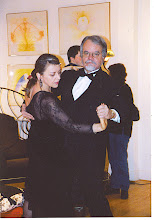Cornell professor and Colorado graduate take up one-year posts in September.
WASHINGTON, May 31 – The Optical Society (OSA), SPIE, the international society for optics and photonics, and the Materials Research Society (MRS) are pleased to announce their 2012-2013 Congressional Science and Engineering Fellows. Chris Schaffer, a professor at Cornell University, will serve as the Arthur H. Guenther Congressional Fellow co-sponsored by OSA and SPIE, and Mirvat Abdelhaq, a recent graduate of the University of Colorado, Boulder, will serve as the OSA/MRS Congressional Fellow. Each will serve one-year terms working as special legislative assistants on the staffs of congressional offices or committees in Washington, D.C.
Schaffer and Abdelhaq will formally begin the program in early September, starting with a comprehensive training and orientation program facilitated by the American Association for the Advancement of Science (AAAS) for Congressional and Executive Branch Fellows sponsored by more than two dozen scientific societies.
The new Fellows will then go through an interview and selection process with offices of senators, representatives or committees on Capitol Hill before choosing the office in which they will serve.
The Congressional Fellows program aims to bring technical and scientific backgrounds and perspectives to the decision-making process in Congress, and provide scientists with insight into the inter-workings of the federal government. Typically, fellows conduct legislative or oversight work, assist in congressional hearings and debates, prepare policy briefs and write speeches as part of their daily responsibilities.
Each year, following a formal application process, finalists are interviewed and Fellows are selected by a committee comprised of volunteer members from OSA, SPIE and MRS. For more information on the selection process and fellowship criteria, visit the SPIE, MRS, or OSA websites.
About the 2012-2013 FellowsSchaffer is currently an associate professor in the Biomedical Engineering Department at Cornell, where he joined the faculty in 2006. His lab’s research focuses on elucidating the cellular dynamics that underlie a variety of neurological diseases through optics-based studies. Projects focus on Alzheimer’s disease, small stroke, epilepsy, spinal cord injury and cancer metastasis.
Schaffer studied physics as an undergraduate at the University of Florida where he worked on the development of techniques for the temporal shaping of very short duration laser pulses. He earned a Ph.D. in physics from Harvard University as a National Defense Science and Engineering Fellow, where he worked with Professor Eric Mazur on the physics of the interaction of short duration laser pulses with transparent materials as well as on applications in the micromachining of transparent materials and in the targeted ablation of biological structures. He completed his post-doctoral work at the University of California, San Diego, where he became increasingly interested in applying physical science methods to biological problems.
As the Guenther Fellow, Schaffer is interested in contributing to the efforts to reform science education and looks forward to providing the perspective of a professional scientist and educator to policy discussions.
Abdelhaq earned her Ph.D. in physical chemistry from the University of Colorado, Boulder, in 2012. Her research involved synthesizing and characterizing novel transition metal complexes with renewable energy applications. In 2006 she graduated from the University of New Mexico where she earned a B.S. in chemistry and a B.A. in history.
Abdelhaq has been very active in numerous community service projects and extracurricular activities throughout her time in school. At Boulder she served as the co-director of the Forum on Science, Ethics and Policy (FOSEP), volunteered as a mentor with the Boulder County Community Services Mentoring Program, was a member of Energy SWEEP – a program that distributes and installs energy efficient materials to low-income households – and tutored female Sudanese refugees. At the University of New Mexico she worked as a chemistry and Arabic tutor and was certified as a master tutor by the College Reading and Learning Association.
As the OSA/MRS Fellow, Abdelhaq is interested in working on food and agriculture policy, renewable energy, and science, technology engineering and math (STEM) education issues.
Source: OSA/SPIE/MRS
ContactStacey Crockett
SPIE
+1 360.676.3290
E-mail: staceyc@spie.orgWeb Site: www.spie.org








